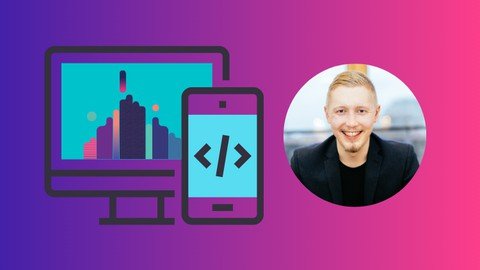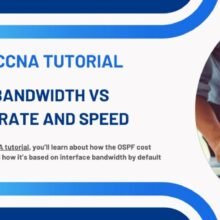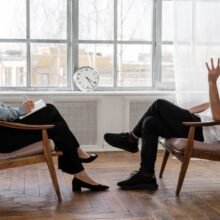Cisco OSPF Basic Configuration In this Cisco CCNA tutorial, you’ll learn how to do a basic configuration of OSPF on our Cisco routers. Scroll down for the video and also text…
Build a Backend REST API with Python & Django – Advanced

Learn the advanced course on how to Build a Back-end REST API using Python, Django (2.0), Django REST Framework (3.9), Docker, Travis CI, Postgres and Test Driven Development!
Whether you’re a freelance programmer, tech entrepreneur, or just starting out building back-ends – this course will help lay the foundation of your knowledge base and give you the tools to advance your skills with some of the most in-demand programming languages today.
APIs are the unsung heroes behind the technologies that we all love and use religiously.
One of the most critical components for any tech-based business is an API. So knowing how to create an API from start to finish is a vital skill to have as a developer. You cannot build a successful app without a backend REST API!
Here’s a simple example of a REST API created using the Django framework and Python language:
# models.py
from django.db import models
class Item(models.Model):
name = models.CharField(max_length=100)
done = models.BooleanField(default=False)
def __str__(self):
return self.name
# views.py
from django.shortcuts import render
from django.http import JsonResponse
from .models import Item
def item_list(request):
items = Item.objects.all()
data = {'items': list(items.values('id', 'name', 'done'))}
return JsonResponse(data)
# urls.py
from django.urls import path
from .views import item_list
urlpatterns = [
path('items/', item_list, name='item_list'),
]
This example implements a basic item model with a name and a done field, a view to return a JSON response of all items in the database, and a URL configuration to map the view to the /items/ endpoint.
About course
In this course I’ll show you how to build an advanced API that handles creating and updating user profiles, changing passwords, creating objects, uploading images, filtering and searching objects, and more.
The best way to learn anything is to do it. So the practical application of the course — the project that you’ll build along side me — is an API. A recipe API, to be specific.
You will learn how to build an advanced recipe API that allows you to upload and store some of your favourite recipes from photos and the web.
You’ll learn how to create objects i.e. recipes with titles, price points, cooking times, ingredients and tags like “comfort food”, “vegan” or “dessert”. Think of it as a virtual recipe box.
By the end of this course you will have built a fully functioning REST API that can handle:
-
User authentication
-
Creating objects
-
Filtering and sorting objects
-
Uploading and viewing images
You’ll also learn, in detail how to:
-
Setup a project with Docker and Docker-Compose
-
Configure Travis-CI to automatically run linting and unit tests
-
Write unit tests using the Django Test Framework
-
Apply best practice principles including Test Driven Development
-
Handle uploading media files with Django
-
Customize the Django admin
-
Configure a Postgres database
This course has one singular focus: To teach you how to create an advanced API from start to finish using best practice principles and Test Driven Development.
This course is NOT FOR YOU:
-
If you’re looking for a course to build an API, a front end, and deployment
-
If you’re looking to build 10 different apps in one course
-
If you want to learn lots of different technologies and approaches to app development in general
This is a hands-on course, with a bit of theory and lots of opportunities to test your knowledge.
The content is challenging but rewarding. Ready for it? Let’s dive in!
What you’ll learn more?
- Setting up a local development server with Docker
- Writing a Python project using Test Driven Development
- Building a REST API with advanced features such as uploading and viewing images
- Creating a backend that can be used a base for your future projects or MVP
- Hands on experience applying best practice principles such as PEP-8 and unit tests
- Configure Travis-CI to automate code checks
PLEASE NOTE: You cannot run Docker on Windows 10 Home edition. This is because Windows 10 Pro or Enterprise is required in order to use Hyper-V which Docker uses for virtualization. To take this course you have two options. These are covered in Lecture 6, which is free to preview before purchasing the course.
Agile project management Artificial Intelligence aws blockchain cloud computing coding interview coding interviews Collaboration Coursera css cybersecurity cyber threats data analysis data breaches data science data visualization devops django docker excel flask Grafana html It Certification java javascript ketan kk Kubernetes machine learning machine learning engineer Network & Security nodejs online courses online learning Operating Systems Other It & Software pen testing Project Management python Software Engineering Terraform Udemy courses VLAN web development














